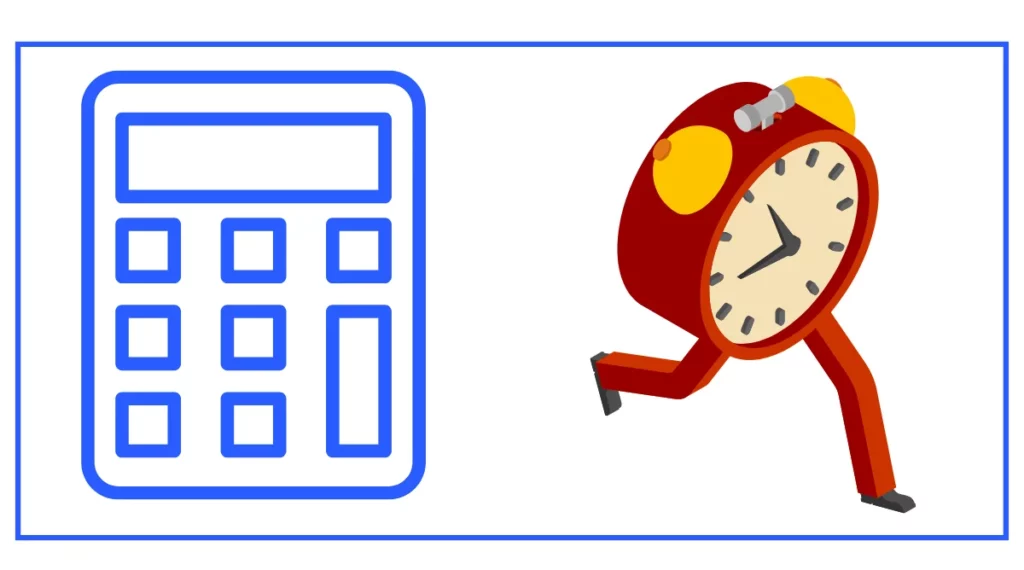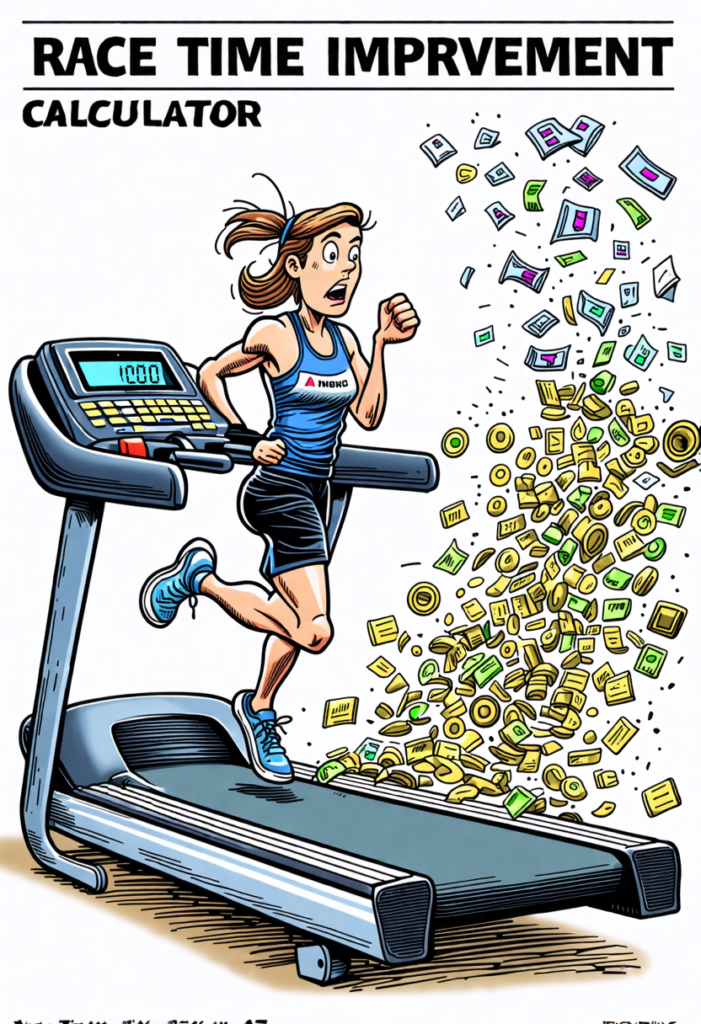Race Time Improvement Calculator
The race time improvement calculator allows you to estimate the improvement for your next race or compare the improvements by race time.
Simply enter the time, and the calculator will show you the improvement times arranged by percentage.
You can even add the custom percentage to find the exact improvement.

You the Training Pace, Running Split, and Running Pace Calculators for more data.
How the Race Time Improvement Calculator Works?
This calculator uses a simple yet effective formula to predict improved race times based on percentage improvements. Here’s how it functions:
- You enter your current race time for a specific distance.
- The calculator then computes improved times for various percentage improvements (1%, 2%, 3%, 4%, 5%, 7%, and 10%).
- You can also input a custom improvement percentage to see how it affects your race time.
Step-by-Step Guide to Using the Calculator
- Enter your current race time:
- Input the hours (if applicable)
- Input the minutes
- Input the seconds
- Click the “Calculate Improvement” button.
- View the results for standard improvement percentages (1%, 2%, 3%, 4%, 5%, 7%, and 10%).
- For a custom improvement calculation:
- Enter your desired improvement percentage in the “Custom improvement (%)” field.
- Click “Calculate Custom Improvement” to see the result.
Practical Applications of the Race Time Improvement Calculator
Setting Realistic Goals
The Race Time Improvement Calculator can be an invaluable tool for setting achievable goals. By seeing potential improvements laid out clearly, runners can set targets that are challenging yet attainable. For example, if you’re currently running a 5K in 25 minutes, the calculator might show that a 5% improvement would bring your time down to 23 minutes and 45 seconds. This gives you a concrete goal to work towards in your training.
Tracking Progress
Runners can use this calculator to monitor their progress over time. By comparing actual race times to the predicted improvements, athletes can assess the effectiveness of their training plans. If you’re consistently outperforming the predicted times, it might be time to set more ambitious goals. Conversely, if you’re falling short of the predictions, it could indicate a need to adjust your training approach.
Race Pace Planning
The calculator can also be useful for planning race paces. If you have a goal time in mind for your next race, you can use the calculator to determine what percentage improvement that represents from your current time. This information can help you and your coach develop a training plan tailored to achieve that specific improvement.
Understanding the Limitations
While the Race Time Improvement Calculator is a useful tool, it’s important to understand its limitations:
- It assumes linear improvement, which isn’t always the case in real-world scenarios.
- It doesn’t take into account factors like race distance, training volume, or individual physiological differences.
- The calculator doesn’t consider external factors such as weather conditions or course difficulty.
Integrating the Calculator into Your Training Plan
To make the most of the Race Time Improvement Calculator, consider these strategies:
- Use it at the beginning of your training cycle to set initial goals.
- Revisit the calculator periodically (every 4-6 weeks) to reassess your goals based on your progress.
- Combine the calculator’s predictions with input from a coach or experienced runner for a more comprehensive approach to goal-setting.
Advanced Features
The custom improvement feature allows you to explore scenarios beyond the standard percentages. This can be particularly useful for:
- Highly competitive runners aiming for small but significant improvements
- Beginners who might see larger percentage gains in their early racing career
- Runners targeting specific time thresholds (e.g., breaking the 4-hour mark in a marathon)
Nutritional Considerations for Improvement
While the calculator focuses on time improvements, it’s crucial to remember that nutrition plays a vital role in performance enhancement. Consider these factors:
- Proper fueling before, during, and after training sessions and races
- Maintaining a balanced diet to support your training volume
- Staying hydrated to optimize performance and recovery
The Role of Rest and Recovery in Improvement
Improvement in race times isn’t just about training hard; rest and recovery are equally important. The calculator doesn’t account for these factors, so keep in mind:
- Adequate sleep is crucial for performance improvements
- Rest days and easy training days are essential components of any successful training plan
- Periodization in your training can help prevent burnout and optimize improvement
Psychological Aspects of Improvement
The Race Time Improvement Calculator provides tangible numbers, but the psychological aspect of improvement is just as important. Use the calculator’s predictions to:
- Build confidence by seeing your potential for improvement
- Stay motivated during challenging training periods
- Develop a positive mindset towards your running goals
Adapting the Calculator for Different Race Distances
While the calculator works for any race distance, it’s important to note that improvement rates can vary based on the length of the race. Generally:
- Shorter races (5K, 10K) might see larger percentage improvements
- Longer races (half marathon, marathon) typically see smaller percentage improvements but larger absolute time improvements
Incorporating Speedwork for Faster Times
To achieve the improvements predicted by the calculator, incorporating speedwork into your training is crucial. Consider:
- Interval training to improve your VO2 max
- Tempo runs to enhance your lactate threshold
- Fartlek workouts to develop speed and endurance simultaneously
The Importance of Consistency in Improvement
The Race Time Improvement Calculator provides a snapshot of potential improvements, but achieving these improvements requires consistent effort. Remember:
- Regular training is key to seeing improvements in your race times
- Consistency in your approach will yield better results than sporadic intense training
- Gradual increases in training volume and intensity can lead to steady improvements over time






